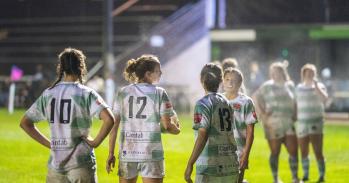Children as young as 12 presented their work and opinions at a conference called Understanding Creativity for Creative Understanding, held at the University of Cambridge’s Faculty of Education last week.
Children as young as 12 presented their work and opinions at a conference called Understanding Creativity for Creative Understanding, held at the University of Cambridge’s Faculty of Education last week.
Focusing on the teaching of Design and Technology (D&T) in schools, and specifically on encouraging and supporting creativity, the event was attended by around 70 teachers, advisers and design specialists.
Participants discussed far reaching questions - such as “What is creativity?” and “Can creativity be taught and measured?” – as well as how D&T can be most effectively delivered to meet the requirements of the National Curriculum.
The conference was staged by a team of Faculty of Education researchers, led by Bill Nicholl, Lecturer in D&T, to present the findings of a major new study and to share innovative teaching strategies, developed to offer ways of nurturing creativity in schools through D&T.
Mr Nicholl trained as an industrial designer and worked extensively in state schools as a teacher of D&T, before joining Cambridge’s Faculty of Education in 2000 as Lecturer in D&T Education. The creativity research project – the largest study of its kind ever undertaken - emerged from his observations of how pupils struggled to generate creativity in D&T.
As principal researcher for the project, his skills were complemented by those of team members Dr Ros McLellan, Lecturer in Education, and Dr Wafa Kotob, who joined the team earlier this year as Research Associate.
The research, which began in 2005 and remains ongoing, has been divided into two phases: a preliminary data-gathering phase and a two-year intervention phase in which researchers worked with eight schools to promote creativity in the classroom. In the first phase the team gathered data from almost 5,000 pupils, more than 250 parents and almost 70 teachers.
The second phase looked in detail at a number of myths about creativity, some of which were confirmed by the data and others by the wider literature. “It is important to declare such myths as they tend to influence teachers’ belief systems and classroom behaviours,” says Bill.
For example, a high proportion of pupils thought they could change their creativity while 17 per cent of teachers thought creativity “could not be taught” and 29 per cent of teachers thought that children had a more or less fixed level of creativity.
One of the main themes of the conference was the role of teachers in helping to develop creativity by encouraging a “zone of creative understanding” in the classroom - and to look at creativity as a process rather than an outcome.
Research in the USA has summarised the human creative thinking process into four different types: extension, analogy, combination and metaphor. The Cambridge research team interviewed leading designers in the UK about their creativity and used the findings to help teachers and policymakers understand terms like “creative thinking”.
Strategies based on the research with designers were developed and used with students in the classroom. These approaches provide a flexible framework to help students generate creative ideas, overcoming what is termed “design fixation” – a natural human response to design tasks that shows itself in teenage work as the love-hearts, Pooh bears and football logos seen on the walls of many a school corridor.
D&T is compulsory for children from the age of 11 to 14. The quality of teaching and learning is markedly uneven across schools, meaning that while some pupils benefit from a creative experience that boosts their confidence and opens up opportunities to them, others are turned off subject areas that could transform their lives.
The research was well received by the audience and it is hoped that policymakers such as QCA and the DCSF will take on board the key messages. Further research from the Cambridge team will look at teacher belief systems and leadership for creativity, an under-researched area in the commercial world, let alone in education.
Teaching materials developed by Mr Nicholl and team are available to schools and colleges through Teaching Resources, based within Middlesex University. For further information contact 01992 716052.
This work is licensed under a Creative Commons Licence. If you use this content on your site please link back to this page.





